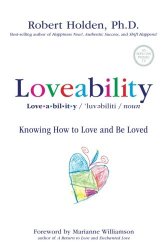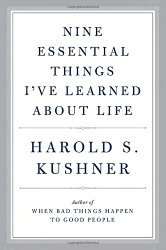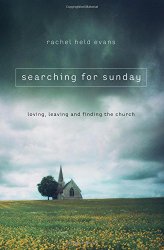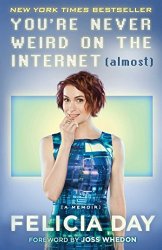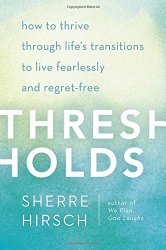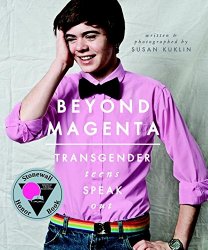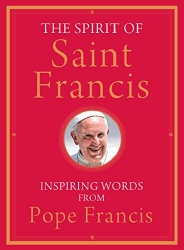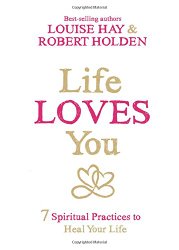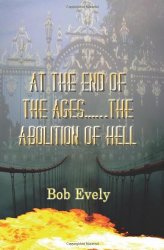 Furiously Happy
Furiously Happy
A Funny Book About Horrible Things
by Jenny Lawson
Flatiron Books, New York, 2015. 329 pages.
Starred Review
Jenny Lawson is The Bloggess, the author of one of the funniest blogs on the Internet. I listened to her first book, Let’s Pretend This Never Happened, and laughed and laughed. I’m trying to remember why on earth I didn’t review it, and suspect it’s probably because I was embarrassed to recommend someone who uses so much coarse language to my prim and proper friends? But I’ve since recommended some of her columns, particularly the one about Beartrum, to enough friends to be sure that the laughter far outweighs any outrage. (And maybe my friends aren’t so prim and proper after all?)
This one, too, has plenty of coarse language and plenty of talk about body parts that don’t usually come up in polite society. But oh my goodness, Jenny Lawson is just so funny. And this book has some open and honest talk about mental illness, which makes it all the better and gives it a great message even beyond making you laugh.
This is not, I’m afraid, a good book to bring to a doctor appointment to read in the waiting room. I brought it, realizing that it’s a good book to dip in and out of, and knowing I wouldn’t be bored. However, I hadn’t stopped to think how I would sound giggling nonstop or letting out random chuckles and snorts. I tried to contain them, but didn’t completely succeed. At the very least, I was smiling ridiculously, looking pretty similar to the raccoon on the cover.
As Jenny says in the disclaimer:
This is a funny book about living with mental illness. It sounds like a terrible combination, but personally, I’m mentally ill and some of the most hysterical people I know are as well. So if you don’t like the book then maybe you’re just not crazy enough to enjoy it. Either way, you win.
The “Furiously Happy” title comes from a blog post the author wrote about being Vehemently, Furiously Happy, just to spite her depression.
This didn’t mean that I wasn’t still depressed or anxious or mentally ill. I still spent my share of weeks in bed when I simply couldn’t get up. I still hid under my office desk whenever the anxiety got too heavy to battle standing up. The difference was that I had a storeroom in the back of my mind filled with moments of tightrope walking, snorkeling in long-forgotten caves, and running barefoot through cemeteries with a red ball gown trailing behind me. And I could remind myself that as soon as I had the strength to get up out of bed I would again turn my hand to being furiously happy. Not just to save my life, but to make my life.
Yes, there’s serious and very helpful talk about mental illness, but there are also random funny bits and hilarious stories. I can’t think of a better way to review this book than to quote a few. I’ll try to limit it to bits without swearing. (If swearing really bothers you, alas, you should avoid this book. Also, you might not want to listen to it in the family car.)
“I’m not going to say I told you so” is pretty much the same thing as saying “I told you so.” Except worse because you’re saying “I told you so” and congratulating yourself for your restraint in not saying what you totally just said.
The phrase “Rest in peace” seems incredibly self-serving. It basically means, “Stay in your grave. Don’t haunt me.” The opposite would be “Fitfully toss” or “Go jogging.”
I don’t understand why people keep pushing that “Don’t be some random person. BE UNIQUE” message. You’re already incredibly unique. Everyone is incredibly unique. That’s why the police use fingerprints to identify people. So you’re incredibly unique . . . but in the exact same way that everyone else is. (Which, admittedly, doesn’t really sing and is never going to make it on a motivational T-shirt.) So none of us are unique in being unique because being unique is pretty much the least unique thing you can be, because it comes naturally to everyone.
People who think it’s so hard to find a needle in a haystack are probably not quilters. Needles find you. Just walk on the haystack for a second. You’ll find the needle. They’re worse than floor-Legos.
Talking about Rory, the taxidermied raccoon on the cover:
Victor thinks taxidermy is a waste of money, claiming that “there are only so many things you can do with a dead raccoon.” But I have proven him wrong time and time again. Victor pointed out that what he’d actually said was “There are only so many things you should do with a dead raccoon,” and honestly that does sound more like something he’d say, but I still disagree.
There’s an essay about when her doctor prescribed antipsychotics. I like this paragraph. She knows how to look on the bright side and make you laugh, too.
Truthfully, though, there are some advantages to being on antipsychotics. First off, you can say you’re on antipsychotics. This might seem silly but when you go to the pharmacy and you’re standing in line with twenty germy people sneezing all over the place you can honestly say, “Would you mind if I went first? I have to pick up my antipsychotic meds and I REALLY needed them yesterday.” This tactic also works for grocery lines, the DMV, and some buffets.
Here’s some good logic:
Technically, if I were farther away from the center of the Earth then I’d be subjected to less gravity and then I would weigh less. So I’m not really fat. I’m just not high enough. Victor says I sound pretty high already but I suspect he’s just being insulting.
But the simple fact is, there’s no such thing as real weight. Only mass. Weight depends entirely upon the gravity of wherever you are, which is why if you weigh yourself on the top of Mount Everest you’d be closer to outer space and you would weigh slightly less than you would at home. But you’d have to lug a scale up to the top of Mount Everest to prove it, which would suck. Honestly, they should just leave a scale up there for people. Although, maybe they already have one, because who’s going to drag a scale back down Mount Everest? That would be crazy. Frankly, I never understood why people climb that thing in the first place, but if there’s a scale up there telling you that you’re skinnier than you think then I guess I can see the draw. . . .
Regardless, on the moon I weigh about as much as a large toaster, so using that logic I’m not overweight. I’m simply overgravitated. Spell-check says that I can’t be “overgravitated” because that isn’t a real word and suggested that I probably meant to say that I’m “overly aggravating.” Victor says spell-check has a point.
Spell-check and Victor are both dead to me.
Perhaps if people are so concerned with obesity they should just work on making the Earth have less mass so there’s less gravity. . . . Victor says this is a clear case of “deflection” and I agree because I assume “deflection” is something scientific used to deflect mass from Earth and, thus, make us all lighter. Victor says he thinks I don’t know what “deflection” means. I think Victor doesn’t know what “being supportive” means. (It means letting me lean on him a little when I’m standing on the bathroom scale.) I think this is all pretty commonsense. Victor says it’s not at all.
And the Bloggess is so good at helpful ways to think about yourself!
I try not to get caught up in appearance issues though because my grandmother always used to say, “It’s what’s inside that counts.” And that’s probably true because with my luck my best feature would be hidden deep, deep inside my body. I suspect my best feature is my skeleton, which is a shame because it might be the most elegant and hauntingly graceful skeleton ever but I’ll never get complimented on it while I’m still fleshy enough to appreciate it. That’s why I’d like people to say “Nice skeleton” to me now. Just give me the benefit of the doubt, you know?
I’ve started handing out similar compliments to strangers, but not about their skeletons, because that would seem disingenuous or even sarcastic since I’m already pretty sure I have the sexiest skeleton ever. It’s dead sexy. See what I just did there? I credit my skeleton with that joke. Clever and beautiful. No, instead I say things like “I’d wager you have an exquisite pancreas.” Or “I bet your tendons are fantastic.” People are usually so overwhelmed that they move away very quickly or tell me they don’t have any money on them. No one is ever prepared to accept compliments from strangers about their internal organs, which just goes to show how seldom we compliment them.
Along those same lines, I love the part where she explains that the person we should be comparing ourselves to is Galileo. But first I have to include where she explains the Spoon Theory:
The Spoon Theory was created by a friend of mine, Christine Miserandino, to explain the limits you have when you live with chronic illness. Most healthy people have a seemingly infinite number of spoons at their disposal, each one representing the energy needed to do a task. You get up in the morning. That’s a spoon. You take a shower. That’s a spoon. You work, and play, and clean, and love, and hate, and that’s lots of spoons . . . but if you are young and healthy you still have spoons left over as you fall asleep and wait for the new supply of spoons to be delivered in the morning.
But if you are sick or in pain, your exhaustion changes you and the number of spoons you have. Autoimmune disease or chronic pain like I have with my arthritis cuts down on your spoons. Depression or anxiety takes away even more. Maybe you only have six spoons to use that day. Sometimes you have even fewer. And you look at the things you need to do and realize that you don’t have enough spoons to do them all. If you clean the house you won’t have any spoons left to exercise. You can visit a friend but you won’t have enough spoons to drive yourself back home. . . .
Really, the only people you should be comparing yourself to would be people who make you feel better by comparison. For instance, people who are in comas, because those people have no spoons at all and you don’t see anyone judging them. Personally, I always compare myself to Galileo because everyone knows he’s fantastic, but he has no spoons at all because he’s dead. So technically I’m better than Galileo because all I’ve done is take a shower and already I’ve accomplished more than him today. If we were having a competition I’d have beaten him in daily accomplishments every day of my life. But I’m not gloating because Galileo can’t control his current spoon supply any more than I can, and if Galileo couldn’t figure out how to keep his dwindling spoon supply I think it’s pretty unfair of me to judge myself for mine.
You’ll even get complimented if you read this book:
How can we be expected to properly judge ourselves? We know all of our worst secrets. We are biased, and overly critical, and occasionally filled with shame. So you’ll have to just trust me when I say that you are worthy, important, and necessary. And smart.
You may ask how I know and I’ll tell you how. It’s because right now? YOU’RE READING. That’s what the sexy people do. Other, less awesome people might currently be in their front yards chasing down and punching squirrels, but not you. You’re quietly curled up with a book designed to make you a better, happier, more introspective person.
You win. You are amazing.
But my favorite bit of all is when she recounts what her husband Victor said to her. He’s a gem. (I won’t get into how this contrasts with something specific my ex-husband said to me about the chronic headaches I used to get. Let’s just say I love Victor vicariously for this sentence.)
Last month, as Victor drove me home so I could rest, I told him that sometimes I felt like his life would be easier without me. He paused a moment in thought and then said, “It might be easier. But it wouldn’t be better.”
Well look at that. I was only going to quote a few good bits. There are far too many! And there are many, many more where that came from! If any of these made you smile, read the book! I can honestly say it left me happier, encouraged, and feeling much better about my own failings and my own quirky, wonderful life.
It didn’t, however, give me the slightest inclination to start collecting taxidermy. However, I am glad that The Bloggess does, and thus brings joy to people all over the world.
TheBloggess.com
flatironbooks.com
Buy from Amazon.com
Find this review on Sonderbooks at: www.sonderbooks.com/Nonfiction/furiously_happy.html
Disclosure: I am an Amazon Affiliate, and will earn a small percentage if you order a book on Amazon after clicking through from my site.
Source: This review is based on a library book from Fairfax County Public Library.
Disclaimer: I am a professional librarian, but I maintain my website and blogs on my own time. The views expressed are solely my own, and in no way represent the official views of my employer or of any committee or group of which I am part.
What did you think of this book?
